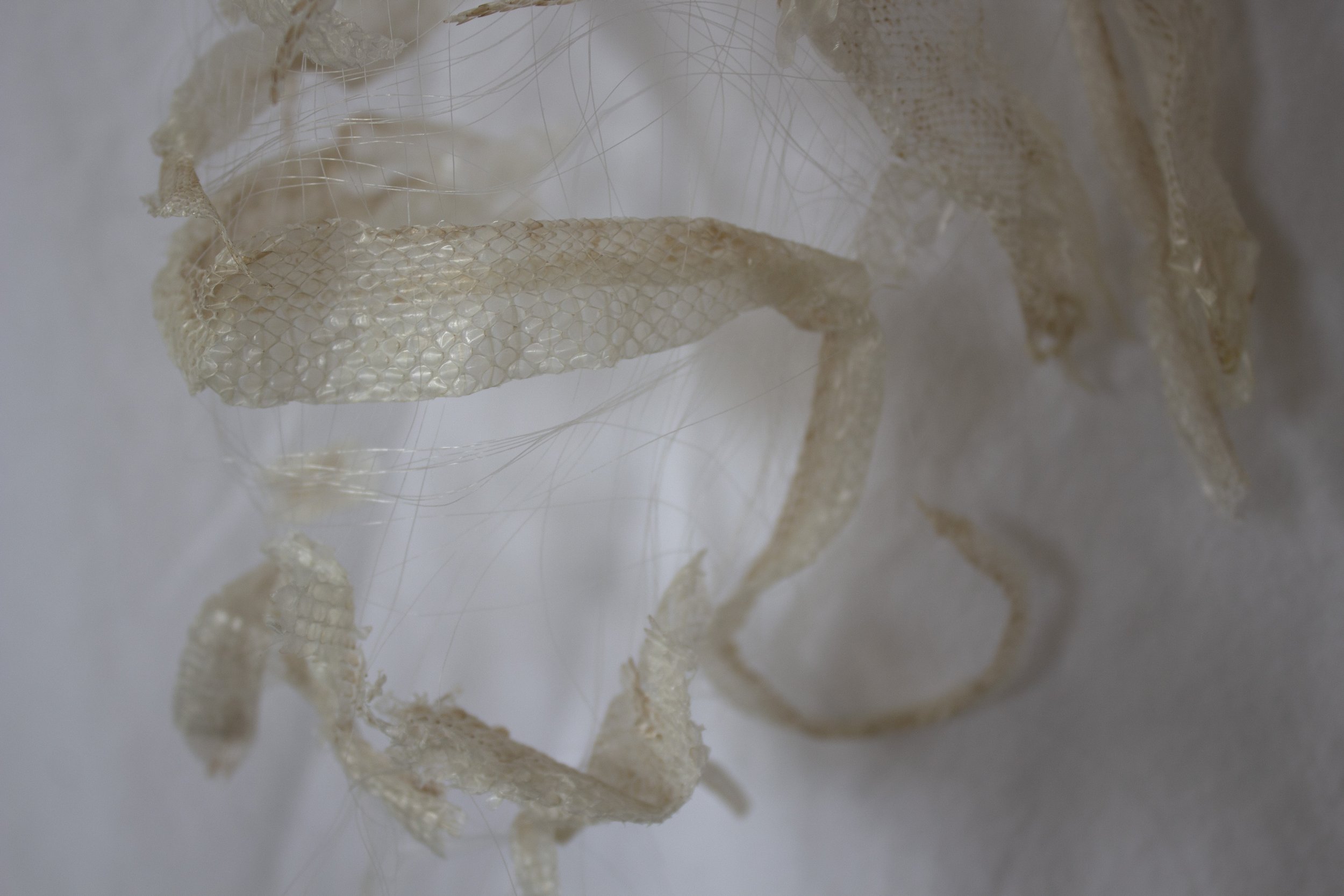
Non-Traditional Wefts
One component of weaving that I love is the versatility of materials that can be used for weft shots. While the warp strings must be very strong to withstand the tension put on them by the loom, the weft material can be comprised of almost anything, giving me huge flexibility with project possibilities.
Snakeskin Weaving.
This incredibly delicate piece is made of a plastic fishing wire warp and dried snake skins collected from my corn snake over two years. After each shed, I would collect the skins, press and dry them, and preserve each one until I had enough to create a whole piece.
Because the skins were so delicate, I obtained a table loom to make this piece so I could keep it in a safe studio space while I was working on it. I chose fishing wire as the warp and support weft shots because of the high tensile strength of the fiber. It also allows the eye to focus primarily on the snakeskins while adding a beautiful webbing component to the piece.






What I like about this weaving, in particular, is how delicate and unstable it is. Over time, the snake skins have started to degrade and fall apart, so the structure of the weaving has changed. I have watched the integrity and composition of the piece alter over time as if passing through phases of life. Although I hope it stays intact for a long time, part of what makes this weaving unique is its temporality.
Paper.
This material has been a recent addition to my repertoire. While it can be a little more difficult to weave than fiber, paper weaves result in a strong structure that makes the perfect backdrop for collage, embroidery, and beading.
This piece was particularly difficult yet rewarding to make. I hand-wove the background and the material for the body out of pieces of paper from children’s books. I then embroidered the figure onto the paper, and completed the piece by stringing gold beads onto metal wire and attaching them through the paper.


